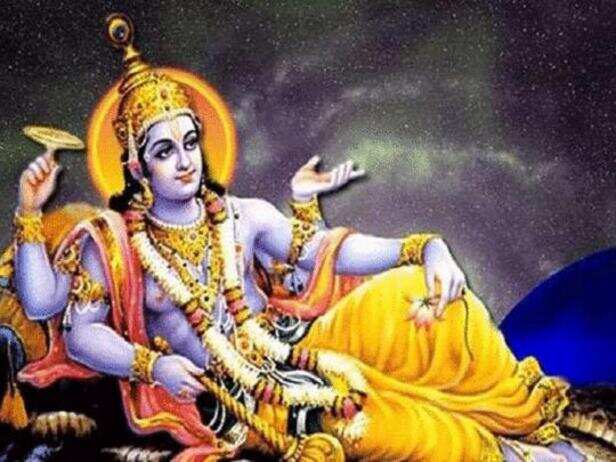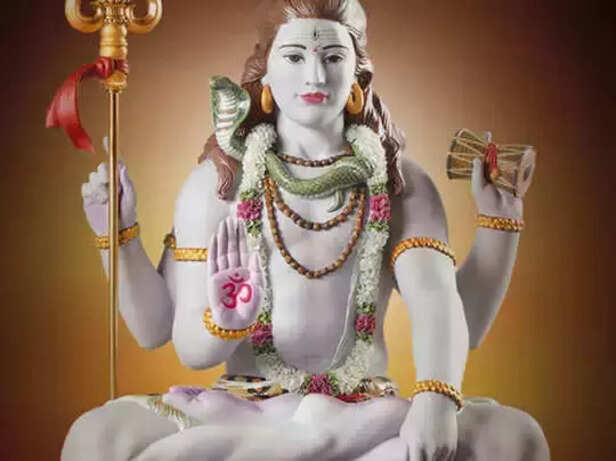Why Do So Many Ancient Hindu Gods Have Multiple Arms?
Riya Kumari | Mar 19, 2025, 23:58 IST
Durga ma
Ever wondered why so many Hindu gods have multiple arms? It’s not just artistic flair or an ancient special effects budget gone wild. Those extra limbs are an entire philosophy in themselves—one that reveals something profound about divinity, power, and even the way we perceive reality.
In Hinduism, gods are not just figures of worship; they are cosmic principles, embodiments of the deepest truths of existence. Every extra arm they have isn’t just an appendage—it’s a statement, a function, a force. And when you truly understand what it represents, you’ll start seeing the world, and even yourself, differently.
1. The Many Arms of Divinity: A Symbol Beyond the Physical

In ancient Hindu texts, gods and goddesses are often described as having multiple arms to signify their immense power and capability. But this isn’t about physical strength—it’s about a reality beyond human limitation. The Upanishads and Puranas describe Brahman, the ultimate reality, as something infinite, beyond form and boundaries. The gods and goddesses, as manifestations of that higher reality, are depicted with multiple arms to show that they are not confined by the limits of the human body. They are not bound by time, space, or the constraints of a single action at a time.
Now, think about that for a moment. Humans operate within limits—we have two arms, two eyes, and a mind that can only focus on so much at once. Gods, however, represent something beyond that. Their many arms illustrate that they exist on a plane where multiple actions, multiple truths, multiple realities can coexist at the same time. They are everywhere, in everything, doing everything, all at once. This isn’t mythology in the way we usually think of stories—it’s a way of explaining a deeper truth about how the universe works.
2. Power is Not Just Strength—It’s Awareness

Every arm of a deity holds something significant—a weapon, a blessing, a symbol of wisdom. This is because power in Hinduism is not just brute force. It is the ability to act in multiple ways, to hold different energies simultaneously.
1. Vishnu, the preserver of the universe, has four arms, each holding something that represents the order of existence: the conch (cosmic sound), the discus (time and destruction), the mace (strength), and the lotus (purity and transcendence). His arms are not just a visual; they are a message—creation and destruction, time and eternity, strength and wisdom are all part of the same reality.
2. Shiva, the god of transformation, is often seen with multiple arms while performing the Tandava, the dance of destruction and renewal. He destroys and creates simultaneously because in reality, every ending is a beginning. His many arms show that destruction is not separate from creation—it is a part of it.
3. Durga, the warrior goddess, holds weapons in all her many arms, showing that true strength is not just in fighting, but in the ability to face all challenges at once. She rides into battle not just with force but with wisdom, grace, and unwavering focus. Each weapon in her hands represents a quality—discipline, courage, justice, divine power—because true victory is not just about defeating an enemy, but about mastering the forces within yourself.
What this tells us is that real power is not in having more weapons or more strength—it is in the ability to balance different forces, to act with awareness, and to hold multiple truths at once.
3. The Deeper Lesson: What This Means for Us

We may not have multiple arms (although some days, we wish we did), but the symbolism still applies. The gods teach us that life demands more than just one way of thinking, one way of acting. It requires us to embrace complexity, to hold different aspects of ourselves together, just like they do. You don’t just need strength—you need wisdom. You don’t just need action—you need patience. You don’t just need power—you need purpose.
In a way, the gods are showing us a blueprint for how to live. Life is not about doing just one thing at a time—it’s about being able to hold many things, many truths, many perspectives, all at once. It’s about knowing when to fight, when to protect, when to let go, and when to create something new.
1. The Many Arms of Divinity: A Symbol Beyond the Physical

Vishnu
( Image credit : Times Life Bureau )
In ancient Hindu texts, gods and goddesses are often described as having multiple arms to signify their immense power and capability. But this isn’t about physical strength—it’s about a reality beyond human limitation. The Upanishads and Puranas describe Brahman, the ultimate reality, as something infinite, beyond form and boundaries. The gods and goddesses, as manifestations of that higher reality, are depicted with multiple arms to show that they are not confined by the limits of the human body. They are not bound by time, space, or the constraints of a single action at a time.
Now, think about that for a moment. Humans operate within limits—we have two arms, two eyes, and a mind that can only focus on so much at once. Gods, however, represent something beyond that. Their many arms illustrate that they exist on a plane where multiple actions, multiple truths, multiple realities can coexist at the same time. They are everywhere, in everything, doing everything, all at once. This isn’t mythology in the way we usually think of stories—it’s a way of explaining a deeper truth about how the universe works.
2. Power is Not Just Strength—It’s Awareness

Durga mata
( Image credit : Times Life Bureau )
Every arm of a deity holds something significant—a weapon, a blessing, a symbol of wisdom. This is because power in Hinduism is not just brute force. It is the ability to act in multiple ways, to hold different energies simultaneously.
1. Vishnu, the preserver of the universe, has four arms, each holding something that represents the order of existence: the conch (cosmic sound), the discus (time and destruction), the mace (strength), and the lotus (purity and transcendence). His arms are not just a visual; they are a message—creation and destruction, time and eternity, strength and wisdom are all part of the same reality.
2. Shiva, the god of transformation, is often seen with multiple arms while performing the Tandava, the dance of destruction and renewal. He destroys and creates simultaneously because in reality, every ending is a beginning. His many arms show that destruction is not separate from creation—it is a part of it.
3. Durga, the warrior goddess, holds weapons in all her many arms, showing that true strength is not just in fighting, but in the ability to face all challenges at once. She rides into battle not just with force but with wisdom, grace, and unwavering focus. Each weapon in her hands represents a quality—discipline, courage, justice, divine power—because true victory is not just about defeating an enemy, but about mastering the forces within yourself.
What this tells us is that real power is not in having more weapons or more strength—it is in the ability to balance different forces, to act with awareness, and to hold multiple truths at once.
3. The Deeper Lesson: What This Means for Us

Shivji
( Image credit : Times Life Bureau )
We may not have multiple arms (although some days, we wish we did), but the symbolism still applies. The gods teach us that life demands more than just one way of thinking, one way of acting. It requires us to embrace complexity, to hold different aspects of ourselves together, just like they do. You don’t just need strength—you need wisdom. You don’t just need action—you need patience. You don’t just need power—you need purpose.
In a way, the gods are showing us a blueprint for how to live. Life is not about doing just one thing at a time—it’s about being able to hold many things, many truths, many perspectives, all at once. It’s about knowing when to fight, when to protect, when to let go, and when to create something new.
